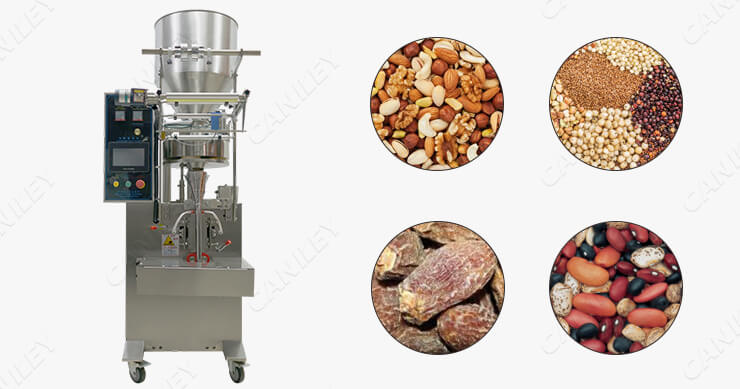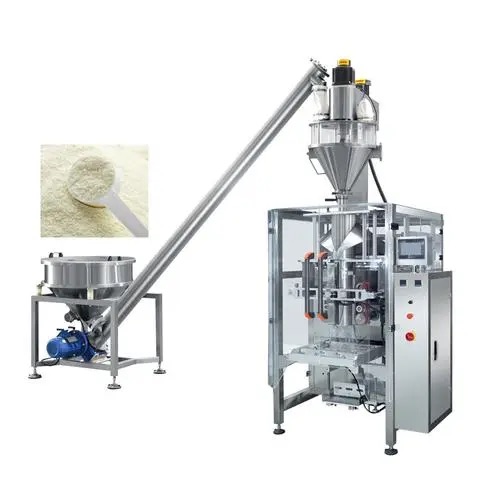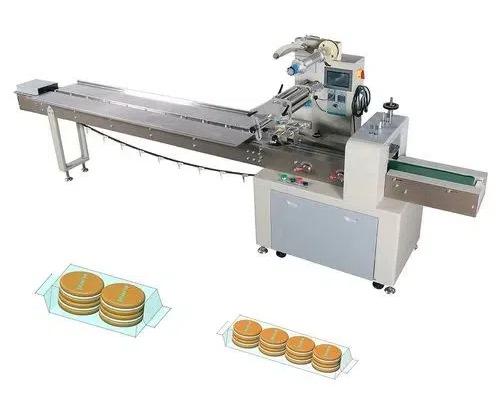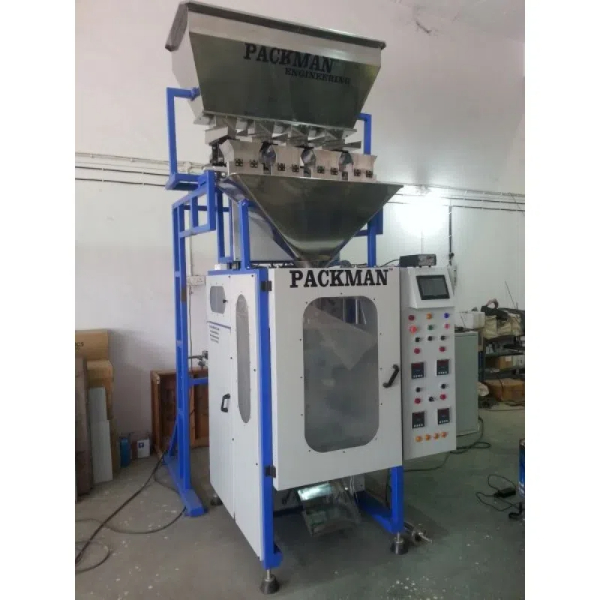
Content Menu
● Introduction
● Key Benefits of Dry Food Packaging Machines
● Types of Dry Food Packaging Machines
>> 1. Vertical Form Fill Seal (VFFS) Machines
>> 2. Horizontal Form Fill Seal (HFFS) Machines
>> 3. Auger Fillers
>> 4. Multi-head Weighers
>> 5. Pouch Packaging Machines
● Advanced Features of Modern Dry Food Packaging Machines
>> 1. Automated Controls and Touch Screen Interfaces
>> 2. Integrated Quality Control Systems
>> 3. Clean-in-Place (CIP) Systems
>> 4. Remote Monitoring and Diagnostics
● Choosing the Right Dry Food Packaging Machine
● Trends in Dry Food Packaging
>> 1. Sustainable Packaging Solutions
>> 2. Smart Packaging
>> 3. Portion Control and Convenience
>> 4. Customization and Personalization
● Case Study: Implementing a New Dry Food Packaging Line
● Maintenance and Care of Dry Food Packaging Machines
● Future of Dry Food Packaging Machines
● Conclusion
● Frequently Asked Questions
>> Q1: What types of dry food products can be packaged using these machines?
>> Q2: How do I determine the right packaging speed for my production line?
>> Q3: Are dry food packaging machines suitable for small-scale production?
>> Q4: How can I ensure my packaging machine meets food safety standards?
>> Q5: Can dry food packaging machines handle different package sizes and formats?
Introduction
In today's fast-paced food industry, efficient packaging is crucial for maintaining product quality, extending shelf life, and meeting consumer demands. Packaging machines for dry food have become an indispensable part of food processing and distribution. These innovative machines are designed to handle a wide range of dry food products, from grains and nuts to powders and snacks, ensuring that they are packaged securely and hygienically.
Key Benefits of Dry Food Packaging Machines
Dry food packaging machines offer numerous advantages to food manufacturers and processors:
1. Increased efficiency and productivity
2. Improved product quality and shelf life
3. Enhanced food safety and hygiene
4. Reduced labor costs and human error
5. Flexibility to handle various packaging materials and formats
6. Compliance with industry regulations and standards
Types of Dry Food Packaging Machines
There are several types of packaging machines specifically designed for dry food products:
1. Vertical Form Fill Seal (VFFS) Machines
VFFS machines are versatile and widely used in the dry food packaging industry. They create bags from a flat roll of film, fill them with the product, and seal them in a continuous vertical process.
2. Horizontal Form Fill Seal (HFFS) Machines
HFFS machines are ideal for packaging products that require a horizontal orientation, such as crackers, cookies, and energy bars. They form the package, fill it with the product, and seal it in a horizontal motion.
3. Auger Fillers
Auger fillers are perfect for packaging powders and fine granules. They use a rotating auger to dispense precise amounts of product into packaging containers.
4. Multi-head Weighers
Multi-head weighers are used for accurately weighing and dispensing dry food products into packaging. They are often combined with VFFS or HFFS machines for a complete packaging solution.
5. Pouch Packaging Machines
Pouch packaging machines are designed to fill and seal pre-made pouches with dry food products. They are versatile and can handle various pouch styles and sizes.

Advanced Features of Modern Dry Food Packaging Machines
Today's packaging machines for dry food come equipped with advanced features to meet the evolving needs of the food industry:
1. Automated Controls and Touch Screen Interfaces
Modern machines feature user-friendly touch screen interfaces and automated controls, allowing for easy operation and quick changeovers between different products or packaging formats.
2. Integrated Quality Control Systems
Many packaging machines now incorporate built-in quality control systems, such as metal detectors, checkweighers, and vision systems, to ensure product safety and consistency.
3. Clean-in-Place (CIP) Systems
CIP systems allow for efficient and thorough cleaning of the packaging machine without the need for disassembly, reducing downtime and ensuring hygiene standards are met.
4. Remote Monitoring and Diagnostics
Advanced packaging machines can be equipped with remote monitoring capabilities, allowing manufacturers to track performance, diagnose issues, and perform maintenance from anywhere.
Choosing the Right Dry Food Packaging Machine
When selecting a packaging machine for dry food products, consider the following factors:
1. Product characteristics (size, shape, texture)
2. Desired packaging format and material
3. Production volume and speed requirements
4. Available floor space
5. Budget constraints
6. Flexibility for future product lines
Trends in Dry Food Packaging
The dry food packaging industry is constantly evolving to meet changing consumer preferences and sustainability goals:
1. Sustainable Packaging Solutions
There is a growing demand for eco-friendly packaging materials and machines that can handle them efficiently. Many manufacturers are investing in packaging machines that can work with biodegradable or recyclable materials.
2. Smart Packaging
Integration of smart technologies, such as QR codes and NFC tags, into packaging is becoming more common. Packaging machines are being adapted to incorporate these features during the packaging process.
3. Portion Control and Convenience
Consumers are increasingly looking for portion-controlled and convenient packaging options. Packaging machines are being designed to create single-serve or resealable packages for dry food products.
4. Customization and Personalization
With the rise of e-commerce and direct-to-consumer sales, there is a growing need for packaging machines that can handle small batch sizes and personalized packaging.

Case Study: Implementing a New Dry Food Packaging Line
A leading snack food manufacturer recently upgraded their packaging line with a state-of-the-art VFFS machine and multi-head weigher combination. The new system allowed them to:
- Increase production speed by 40%
- Reduce product giveaway by 2%
- Improve package seal integrity, extending product shelf life
- Reduce labor costs by 30%
- Easily switch between different product lines and packaging formats
The investment in modern packaging technology paid off within 18 months through increased efficiency and reduced operational costs.
Maintenance and Care of Dry Food Packaging Machines
To ensure optimal performance and longevity of packaging machines for dry food, regular maintenance is essential:
1. Follow manufacturer's guidelines for cleaning and maintenance schedules
2. Train operators on proper machine operation and troubleshooting
3. Keep spare parts on hand for quick repairs
4. Regularly inspect and replace wear parts
5. Schedule professional servicing at recommended intervals
Future of Dry Food Packaging Machines
The future of packaging machines for dry food looks promising, with several exciting developments on the horizon:
1. Integration of artificial intelligence for predictive maintenance and self-optimization
2. Increased use of robotics for loading and palletizing
3. Development of more energy-efficient and sustainable packaging solutions
4. Enhanced flexibility to handle a wider range of packaging materials and formats
5. Improved connectivity and data analytics capabilities for better production insights
Conclusion
Packaging machines for dry food have revolutionized the food industry, offering increased efficiency, improved product quality, and enhanced food safety. As technology continues to advance, these machines will play an even more crucial role in meeting the evolving demands of consumers and the industry. By investing in the right packaging solutions, food manufacturers can stay competitive, reduce costs, and deliver high-quality products to their customers.

Frequently Asked Questions
Q1: What types of dry food products can be packaged using these machines?
A1: Packaging machines for dry food can handle a wide variety of products, including grains, nuts, seeds, powders, snacks, pasta, cereals, dried fruits, and many more. The specific machine type and configuration will depend on the product characteristics and packaging requirements.
Q2: How do I determine the right packaging speed for my production line?
A2: The appropriate packaging speed depends on several factors, including your production volume, product characteristics, packaging material, and downstream processes. It's best to consult with packaging machine manufacturers or industry experts who can assess your specific needs and recommend the most suitable solution.
Q3: Are dry food packaging machines suitable for small-scale production?
A3: Yes, there are packaging machines available for various production scales, including small-scale operations. Some manufacturers offer compact, versatile machines that can handle lower production volumes while still providing efficiency and quality packaging.
Q4: How can I ensure my packaging machine meets food safety standards?
A4: To meet food safety standards, choose machines made from food-grade materials, such as stainless steel, and those designed for easy cleaning and sanitization. Look for machines that comply with industry standards like FDA and HACCP. Regular maintenance, proper cleaning procedures, and operator training are also crucial for maintaining food safety.
Q5: Can dry food packaging machines handle different package sizes and formats?
A5: Many modern packaging machines for dry food are designed with flexibility in mind. They can often be adjusted to handle various package sizes and formats with minimal changeover time. However, the specific capabilities will depend on the machine model and configuration. When selecting a machine, discuss your product range and future plans with the manufacturer to ensure the chosen solution can meet your needs.












